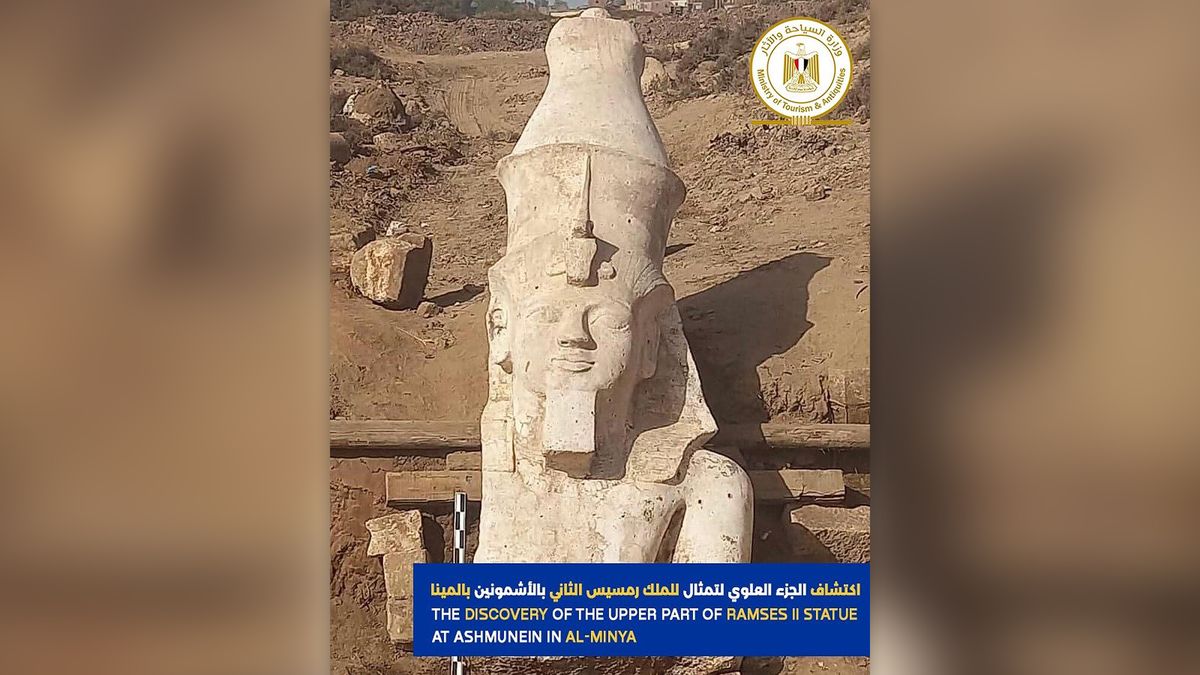The upper half of a giant statue of the ancient Egyptian pharaoh Ramesses II has been discovered near the ancient city of Hermopolis (modern-day el-Ashmunein), about 155 miles (250 kilometers) south of Cairo.
The large stone piece is about 12.5 feet (3.8 meters) tall and depicts Ramesses II (reign circa 1279 to 1213 B.C.) wearing a double crown and a headdress topped with a royal cobra, the Egyptian Ministry of Tourism and Antiquities said in an Arabic language statement. The back of the statue has hieroglyphs that state the various titles of the king. These titles help to glorify Ramesses II, according to the statement.
The lower part of the statue was found in 1930 by German archaeologist Günther Roeder. The original statue, when the lower and upper parts were together, would have stood about 23 feet (7 m) tall, the statement said.
Related: Ancient Egyptian pharaoh Ramesses II’s ‘handsome’ face revealed in striking reconstruction
During the reign of Ramesses II, during the 19th dynasty, Egypt was a vast empire that extended roughly from modern-day Sudan to Syria. A new capital, Pi-Ramesses, was constructed at Qantir, in northeastern Egypt, and Ramesses II made a peace treaty with the Hittites in which he would marry a Hittite princess, Peter Brand, a history professor at the University of Memphis, wrote in his book “Ramesses II, Egypt’s Ultimate Pharaoh” (Lockwood Press, 2023).
Numerous statues of Ramesses II were constructed during and after his reign. These include some at Abu Simbel, in southern Egypt, that are about 66 feet (20 m) tall, according to the University of Memphis.
The excavation that revealed the upper part of the statue was conducted by an Egyptian-American team. The mission is led by Basem Gehad, an archaeologist with the Egyptian Ministry of Tourism and Antiquities, and Yvona Trnka-Amrhein, an assistant professor of classics at the University of Colorado Boulder.
In addition to discovering the statue, the team has been working to restore the Ashmunein Basilica, a Christian basilica dedicated to the Virgin Mary that was built on the site in the sixth century, according to the statement.


